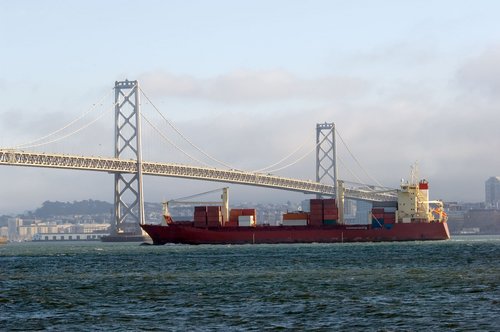Bay Bridge still closed - no reopening time set
Rachel Gordon, Chronicle Staff Writer
Friday, October 30, 2009
The Bay Bridge did not reopen in time for this morning's commute, and Caltrans had no estimate of when the span would be back in business.
"There's still a lot of work going on," Caltrans spokesman Bart Ney said.
Repair crews were still on the bridge at 6:30 a.m. fitting and cutting steel, Ney said.
Thursday night, Caltrans had held out hope that the span could open to traffic this morning. Ney did not cite any specific problems with the repairs today, but said more work was needed.
The bridge may be reopened this afternoon "if everything goes perfectly," he said. However, once the fixes are in place, the work still must pass inspection by an independent team, Ney said.
"It's like kicking tires on a car," he said. "They want to see the system complete. They want to see it in place. They want to take a look at how it vibrates."
It was engineers' failure to take into account how vibrations from wind and 280,000 cars a day would affect a patch fix to the cantilever section made over the Labor Day weekend that caused the repair to fall apart Tuesday.
A 5,000-pound steel beam and two steel tie rods that were holding together a cracked structural support failed and rained down on the upper deck, damaging three cars but causing no serious injuries.
The new repair is a modification of the original fix. It includes several structural changes that state officials said should prevent a repeat of Tuesday's failure.
"We don't have any evidence that there is anything fundamentally wrong with the design itself," state Transportation Secretary Dale Bonner said.
Caltrans crews had been inspecting the bridge repair weekly, closing one or two lanes of traffic each Friday and Saturday night while workers in lifts looked at the saddles and tie rods used in the Labor Day fix.
On Oct. 10, they discovered that the rods that were part of the repair were vibrating. At that point, they began considering ways to strengthen the repair; however, they did not feel it was dangerous enough to close the bridge.
After the patch fix fell apart, crews replaced all the rods at the damaged section, fashioned an anti-vibration system and added extra welding to the components. The idea, officials said, is that if the brace around the broken structural support, called an eyebar, fails again, it will not come crashing down.
Aware of the need to rebuild public confidence, Ney said that in addition to fortifying the design of the fix, additional inspectors were brought in to help ensure the bridge repair was safe.
Inspectors from the Federal Highway Administration and the state seismic safety review panel reviewed both the plans to repair the fix and the work itself. They were expected to conduct a stress test and make sure the welds would hold. They were also considering running heavy trucks across the span to test vibrations.
Once the bridge reopens, Caltrans officials said, additional inspections and a new electronic monitoring system will be implemented. Rather than inspecting the entire bridge every two years, as had been the case, it will be inspected every three months. In addition, they will give extra scrutiny to the repair job and will conduct weekly, if not daily, inspections.
Electric devices that monitor vibration and structural movement will be affixed to the repair to warn of failure.






















